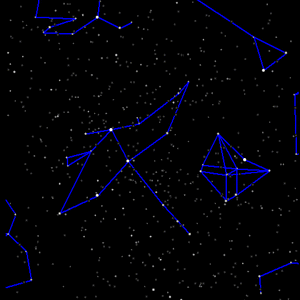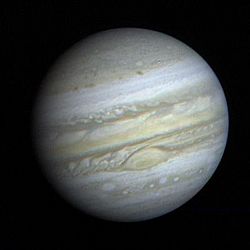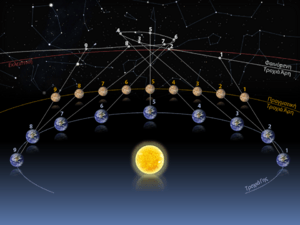Craig Chester (astronomer) facts for kids
Craig Chester is an American astronomer. He is best known for starting the Monterey Institute for Research in Astronomy (MIRA) with a group of friends. He also came up with a popular theory about the Star of Bethlehem.
Chester has also worked on important technology. He developed software for satellite communications for the United States military.
Contents
Building an Observatory
A Big Idea
When Craig Chester was a student at Case Western Reserve University, it was a tough time to become an astronomer. There were not many jobs available. Many students who studied astronomy had to find work in other fields.
In 1971, Chester and his friend, William Bruce Weaver, had an idea. They talked about buying a small telescope together. This would let them keep studying the stars after they graduated. But soon, their small idea grew into a much bigger one.
They shared their idea with four other astronomy students and three of their friends. Together, the group of nine decided not to just buy a telescope, but to build their very own observatory. They looked at maps and found a perfect spot in the Los Padres National Forest in California. In 1972, they created MIRA as a nonprofit group. They used their own savings to buy 80 acres of land.

Making the Dream Real
The nine founders of MIRA worked hard to raise money. They started a mail-order bookstore and used their earnings from other jobs to fund the project. In 1975, they finally got a road built to their site on Chews Ridge.
On their first night camping there, Chester and Weaver saw something amazing. "There directly overhead was the Northern Cross, and suddenly we saw a star that didn't belong," Chester said. It was a nova, or an exploding star. It was the first nova bright enough to be seen without a telescope in 30 years. They felt it was a sign they were on the right path.
Famous scientists began to support their project. Astrophysicist Martin Schwarzschild loaned them a large 36-inch telescope mirror that had been made for NASA. The Research Corporation, a science foundation, gave them a $76,000 grant to build the telescope. Many others also donated money and supplies. The MIRA observatory officially opened in 1984.
The Star of Bethlehem Theory
One of the questions people often asked Chester was about the Star of Bethlehem. This is the star that the Bible says led the Magi, or wise men, to the birthplace of Jesus. Chester decided to investigate it using astronomy.
In 1993, he presented his ideas. He suggested the "star" was not a single star at all. Instead, it was a series of special events in the sky involving planets.
What Did the Magi See?
Chester's theory focuses on the years 3 BC and 2 BC. He explained that the planet Jupiter, often linked with kings, had a series of close encounters, or conjunctions, with the star Regulus, which was also seen as a royal star.
Later, Jupiter also had a very close conjunction with the planet Venus. These events would have looked very bright and impressive in the night sky.
How Did the Star "Stop"?
The Bible says the star "stopped" over the place where the child was. Chester explained this using a concept called apparent retrograde motion.
From Earth, planets in our solar system usually move eastward across the stars. But sometimes, they appear to slow down, stop, and move backward (westward) for a few weeks. Then they stop again before moving forward. This is because Earth is also orbiting the sun and sometimes "overtakes" the other planets.
Chester suggested that one of Jupiter's "stationary points," when it appeared to stop in the sky, happened over the town of Bethlehem. This could be the "stopping" that the story describes.
His ideas helped inspire a documentary film called The Star of Bethlehem.
Other Work
Besides his work at MIRA, Craig Chester has had a successful career in technology. He developed software for satellite communications systems used by the United States Navy and United States Air Force. He worked for major companies that support government and defense projects.
Even with his other jobs, Chester stayed involved with MIRA. He served as its president for many years, including in 2016.
Personal Life
In 1984, Craig Chester married Nancy Lynn Welliver. She was a photographer and artist. They were married for 27 years before she passed away in 2012.
See also
- Apparent retrograde motion
- List of astronomers




